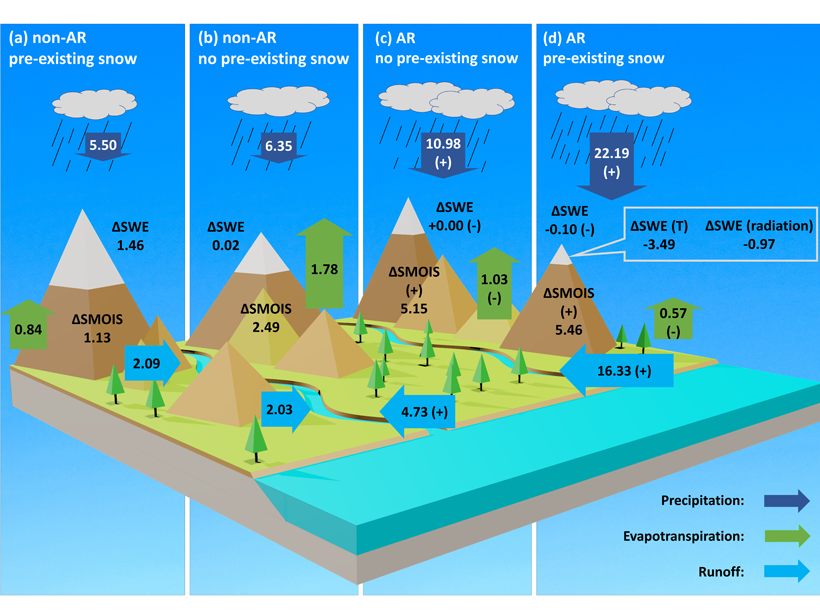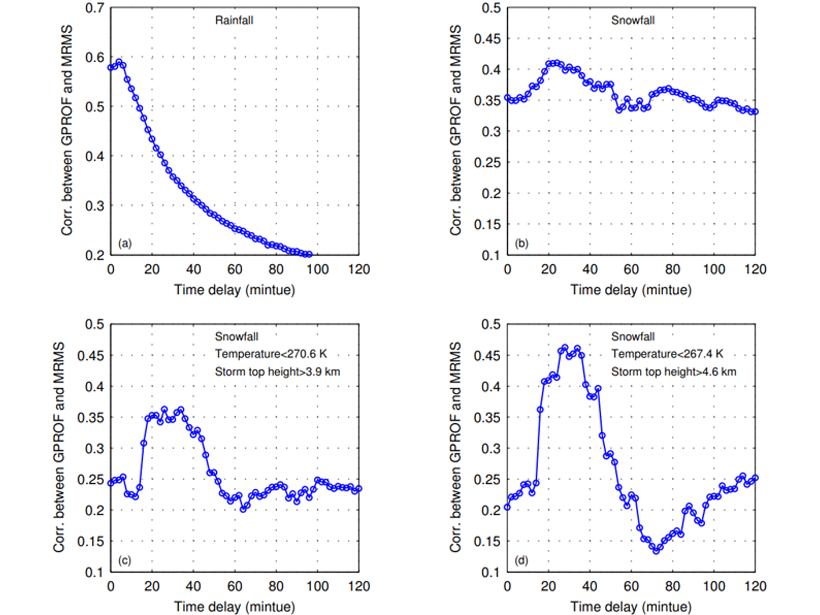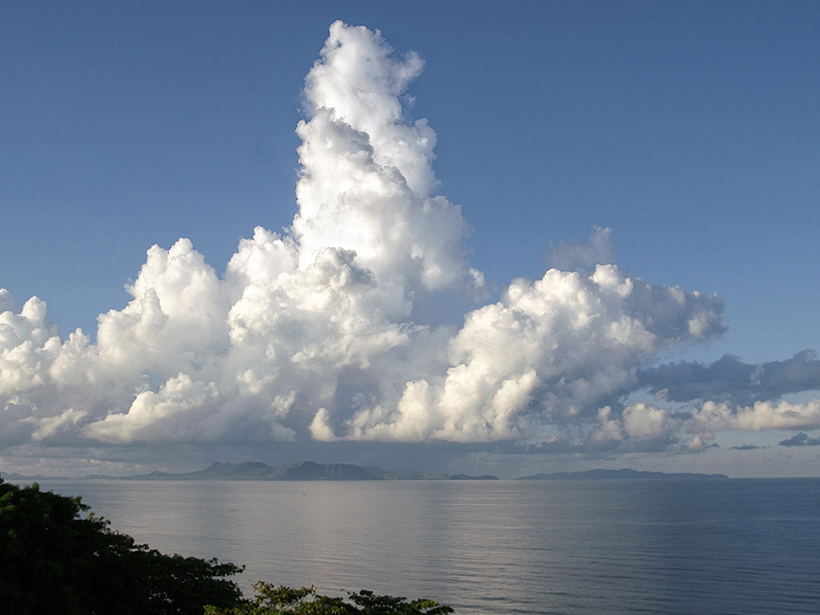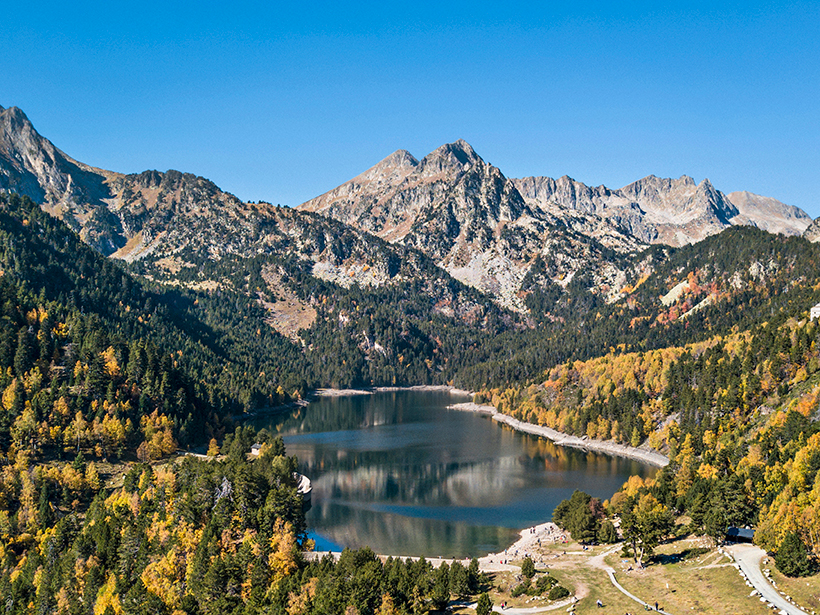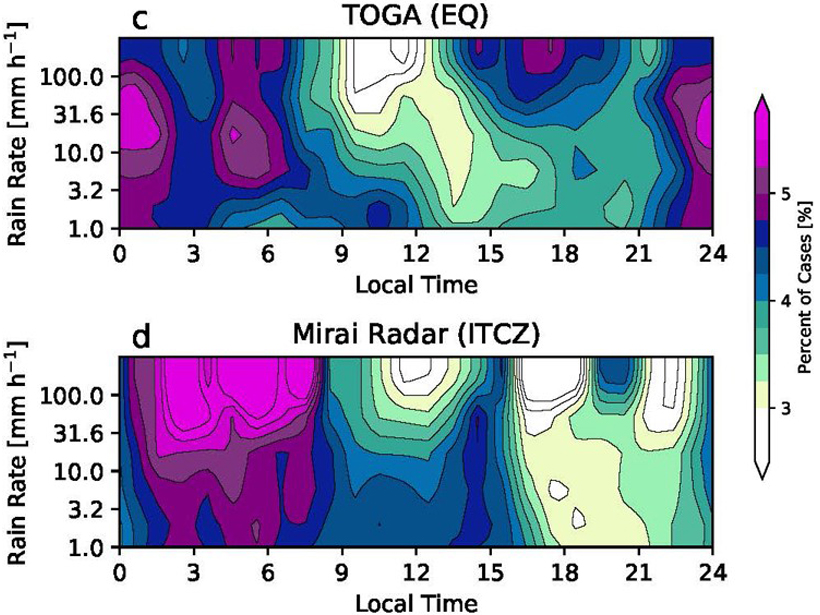Atmospheric rivers that make landfall in the western United States have significant impacts on the surface water balance, sharpening the seasonality of water resources in coastal watersheds.
precipitation
Accounting for the Fact that Snow Falls Slower than Rain
When calibrating satellite observations with ground-based ones, estimated precipitation rates are improved by considering that snow takes longer to fall compared to rain.
Rainfall Kick-Starts Slow-Moving Landslides
A census of hundreds of slow-moving landslides in Northern California reveals an uptick in the number and speed of landslides in 2017, the second-wettest year on record.
Congo Rain Forest Endures a Longer Dry Season
The forest’s dry season has been starting earlier and ending later for decades, making parts of it vulnerable to incursions by drought-resistant ecosystems.
One Step Closer to a Milestone in Climate Modeling
A pair of revisions to the Energy Exascale Earth System Model improves its ability to capture late afternoon and nocturnal rainfall as well as the timing and movement of convection.
Extreme Precipitation Expected to Increase with Warming Planet
A new analysis indicates that the frequency and magnitude of extreme precipitation events are expected to increase as Earth continues to warm.
If Precipitation Extremes Are Increasing, Why Aren’t Floods?
Improving our understanding of the relationship between changes in precipitation and flooding due to rising temperature is a new grand challenge for the scientific community, argue the authors of a recent commentary.
Precipitation in the Tropics: A New View
The first study to simultaneously investigate precipitation and cloud structures in tropical weather systems concludes observation systems significantly overestimate the height of raining clouds.
Microbes Rain Down from Above, to the Tune of the Seasons
Every time snow or rain falls, it brings with it microbes from high in the atmosphere. Could those microbes have a seasonal signal, just like the plants on the land below?
Diurnal Variation of Rainfall over the Equator Revisited
Radar data show an afternoon precipitation maximum in the equatorial Indian Ocean in addition to the nocturnal maximum; this occurs under light surface winds and suppressed large-scale convection.

